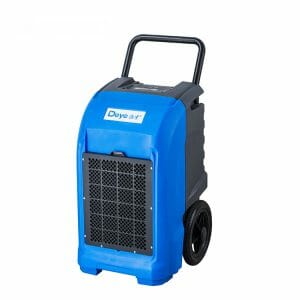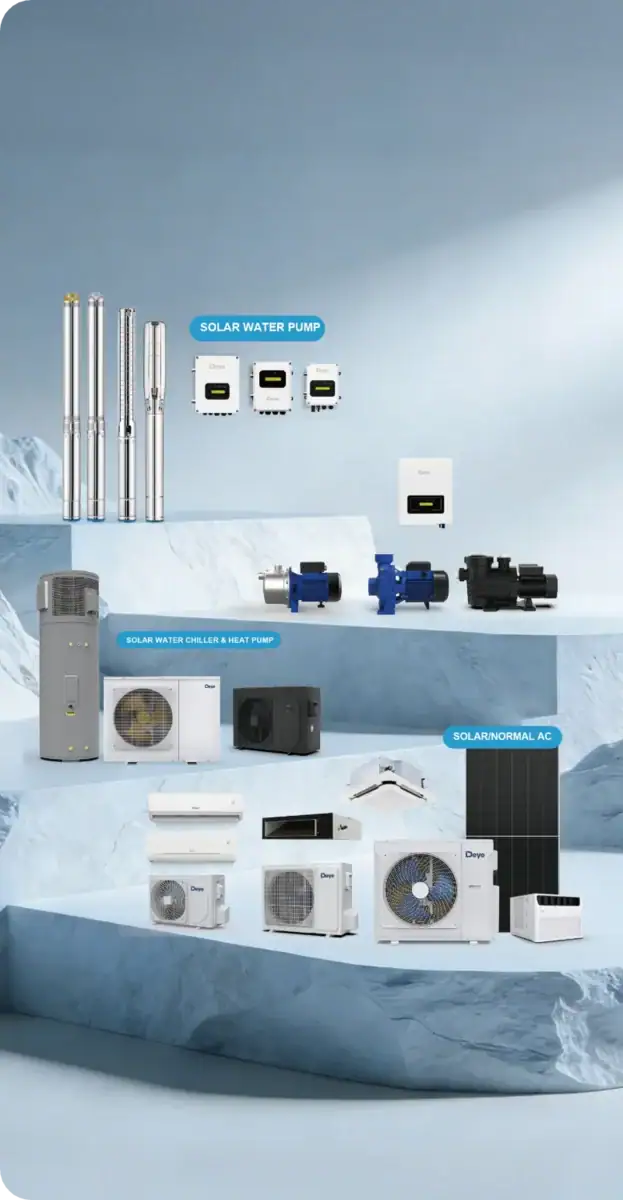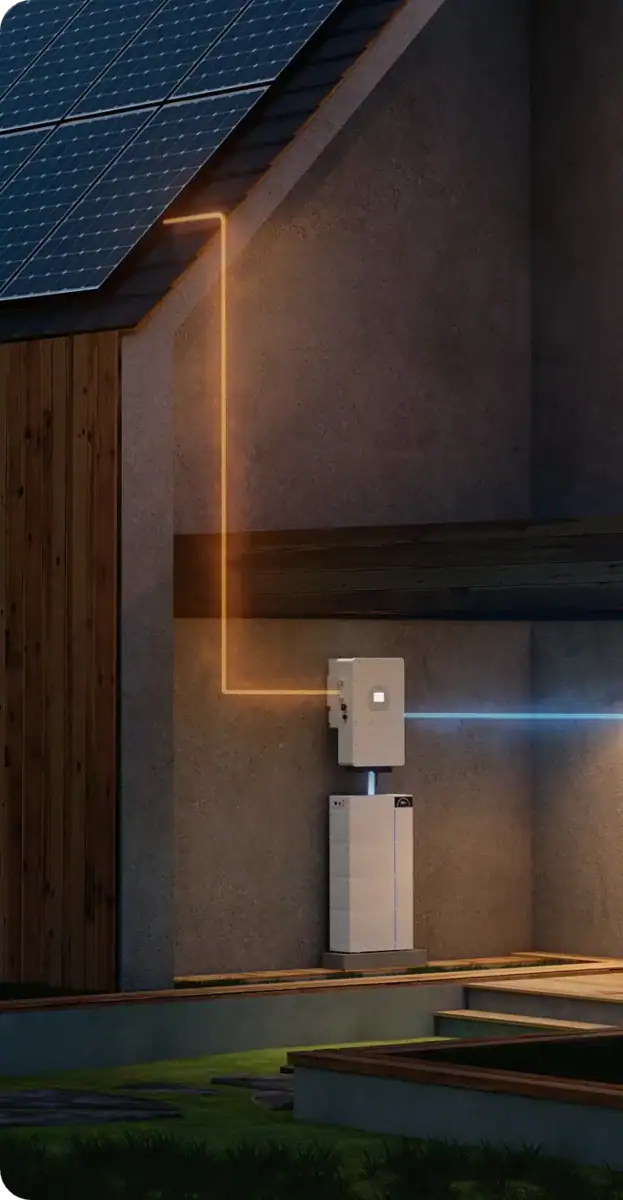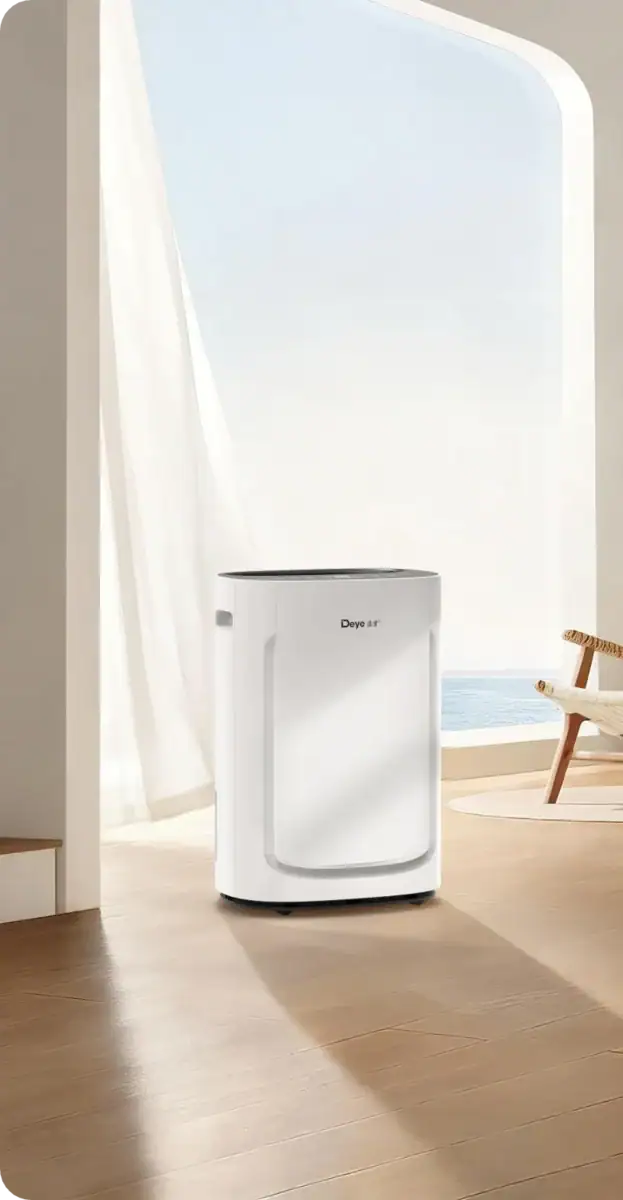Water vapor is undetectable until it condenses, frequently occurring on window surfaces and garden rooms. These little drops of water that we notice on household and garden room surfaces are condensation.
We are frequently asked how to prevent condensation in a garden room. This might happen when warm air encounters a cold surface, such as a window, especially in the winter. Using a dehumidifier for a garden room can help you reduce such occurrences.
In the winter, condensation is a common occurrence. It can happen when your heating system kicks on in the early morning or late at night. When moist air is combined with a cold surface, it loses its ability to hold onto its water content. Water retention is only possible when the air is warm.
Although this occurrence is uncommon during the summer, during the winter months, the amount of water in the air (known as humidity) is substantially higher. This can be significantly higher inside our homes and in our garden rooms. We trap the damp air by turning up the heat and closing the windows. The moisture level inside the house increases when the temperature drops outside.
So, what does humidity have to do with a garden room? Condensation can seep through wallpaper, bathroom, kitchen tiles, paint, blistering, distorting, and cracking surfaces. Moisture can also wreak havoc on wooden structures and objects. If the problem is not addressed, mold may begin to grow in wet areas.
Symptoms of Surface Condensation-Induced Damp
Condensation can be dangerous to your health and your house. If you suspect moisture is caused by condensation in your garden room, it’s important to have it checked and sorted as soon as possible.
Here are some signs that you may have a damp problem in your garden room or garden office due to surface condensation:
You may also sense a damp or musty odor, albeit this dampness indicator is not confined to condensation-related wetness.
Type of Condensation that Occurs in the Garden Room
The two types of condensation in the garden room are surface and interstitial condensation.
Condensation in Garden Rooms: What to Do
It is easier to prevent condensation in garden rooms than to deal with the aftermath. Fortunately, you can take some simple actions to avoid moisture caused by condensation.
The following are the most basic methods for preventing humidity in garden rooms and garden offices induced by condensation formation.
Ventilation
Modern homes and garden structures are generally built to be warm. They are also sealed with glazed doors and windows, causing extra warmth. While this is great for keeping your space warm, it isn’t so great for preventing condensation. This is because no ventilation removes moisture-laden air and allows fresh air in.
Insulation
Insulation can be installed beneath the foundation, under the flooring, and within the walls. In the roof area, prevent the moisture that can be created by condensation in your garden room or office.
Insulation prevents heat loss during the colder months. It prevents the building from overheating during the hot summer and acts as a sound barrier. It’s worth mentioning that while insulation can prevent condensation by keeping a structure’s interior above the dew point, it can also produce condensation if the building isn’t properly ventilated.
Heating
Using a form of heating to keep your garden room or garden office warm is another way to help prevent the dampness caused by condensation. It would be best to use a constant, low-level heat, such as that provided by underfloor heating, as sudden temperature changes can worsen a condensation problem. Find out how to heat a garden room.
Double glazed windows
Condensation can form on any glazing, but single-glazed windows are much colder on the inside than double- or triple-glazed windows, making them far more susceptible to condensation. Allowing fresh air into the building by leaving a window slightly open reduces energy consumption.
Dehumidifying
The primary function of a dehumidifier is to remove excess moisture from the air and collect it in a reservoir that can subsequently be emptied. They are particularly successful at preventing condensation. Dehumidifiers come in various forms, sizes, and pricing points. It is essential to find one that meets your needs and your budget.
Benefits of Using a Dehumidifier
Reduces Energy Cost
One significant benefit of using a dehumidifier is that it can reduce energy bills and allow the air conditioning unit to work more effectively. When deciding between a dehumidifier and an air conditioner, remember that the air conditioner’s primary function is to chill the air, with moisture removal as a bonus.
A dehumidifier’s sole purpose is to remove moisture from the air, so your air conditioner won’t have to work as hard to maintain a comfortable temperature, reducing energy consumption and cooling system wear and tear.
Humidifiers aren’t meant to chill the air; they’re intended to remove moisture. You can, however, buy air conditioner/humidifier hybrids (typically portable devices) that can accomplish both jobs.
Moisture Levels are Controlled
Condensation can lead to mold growth. High moisture levels in a home can also warp and damage the structure. It is crucial to prevent mold growth because the steps to eliminate it can be both hazardous to one’s health and highly costly.
Ironically, due to reduced air circulation, homes that are effectively sealed for energy efficiency can have some of the worst problems. You may need a dehumidifier to avoid mold if you detect peeling paint or wallpaper, strange stains, or a musty stench.
Reduction in Pest Problems
Allergens aren’t the only unpleasant guests who enjoy moist environments. Spiders and roaches, for example, prefer damp conditions. Pay close attention to the rooms with the most insect activity; if they contain water or have a high humidity level, you may have discovered the source of the problem.
We are wholesale manufacturers of high-quality dehumidifiers for a garden room. We have a team of sales representatives to answer your questions and take your customized order. Please, fill out the contact form to get started.










